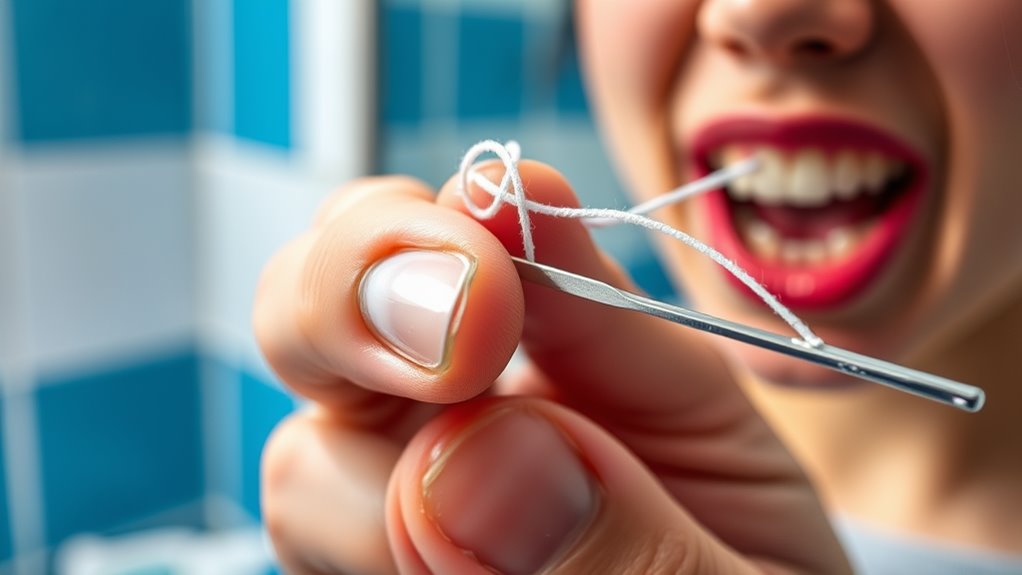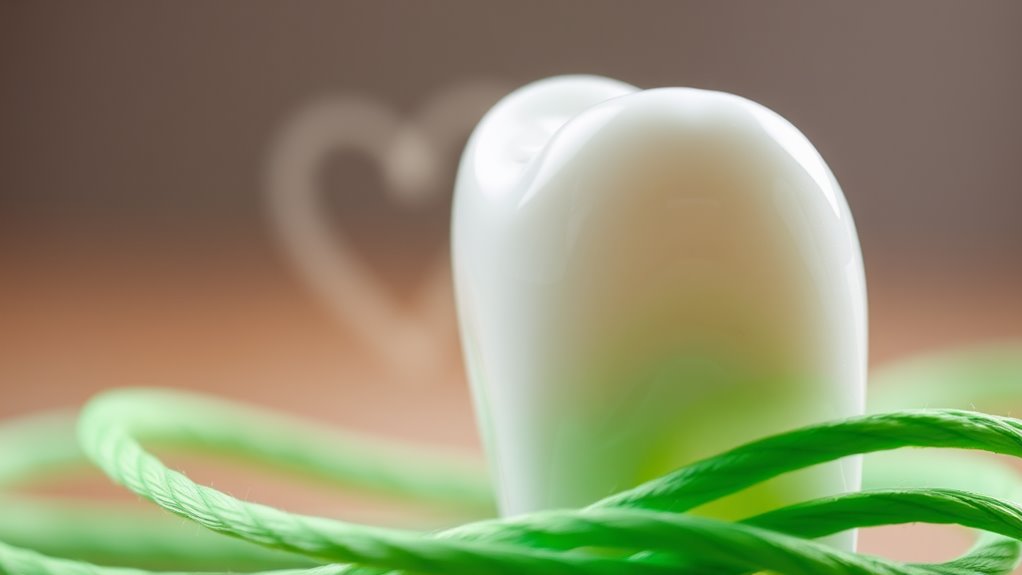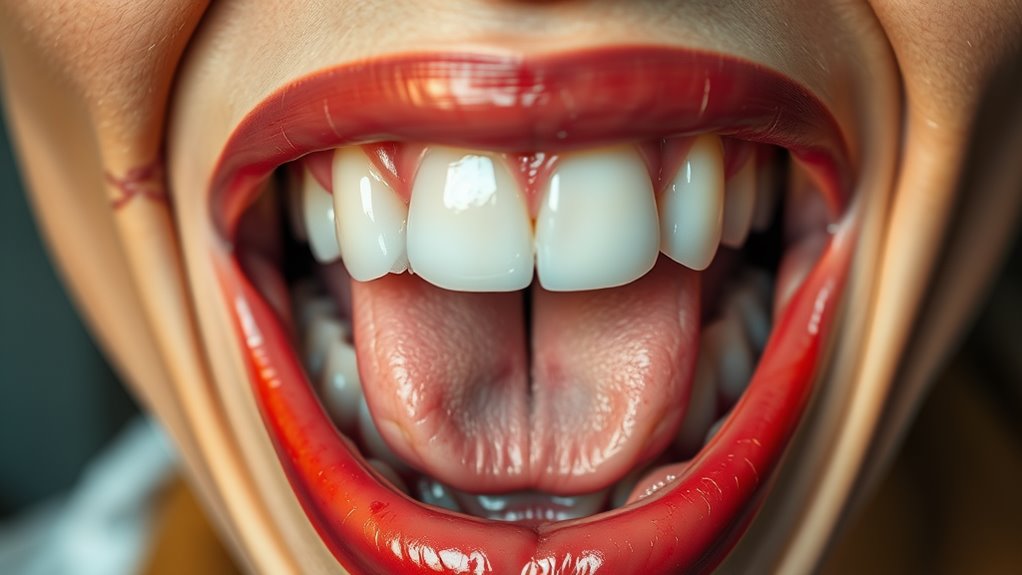Why Your Flossing Technique Might Be Hurting Your Gums
If you find your gums sore or bleeding after flossing, your technique might be the culprit. Many people unknowingly make mistakes, like using too much force or not curving the floss properly. These errors can lead to irritation and more serious dental issues. Understanding the right approach is essential for effective cleaning. Let’s explore the common pitfalls and how you can improve your flossing routine for healthier gums.
Key Takeaways
- Using excessive force while flossing can irritate gums, leading to inflammation and discomfort.
- Snapping floss between teeth can cause gum damage and increase sensitivity.
- Failing to curve the floss around each tooth misses the crucial gum line cleaning.
- Employing aggressive motions can result in pain and ineffective plaque removal.
- Regularly bleeding or swollen gums may indicate improper flossing techniques need adjustment.
Common Flossing Mistakes
Have you ever wondered why your gums hurt after flossing? One reason could be common flossing mistakes.
Many people make flossing errors, like using too much force or snapping the floss between teeth. This can irritate your gums and lead to inflammation.
Additionally, failing to floss thoroughly can leave plaque behind, making your gums more sensitive.
If you’re not curving the floss around each tooth properly, you miss cleaning the gum line, which can also cause discomfort. Gentle touch is essential to prevent gum irritation and enhance your oral hygiene routine.
The Importance of Gentle Technique
When you floss, using the right pressure is crucial to protect your gums from damage. Avoid aggressive motions; they can lead to irritation and bleeding. Additionally, selecting the appropriate type of floss can enhance your technique and promote better oral health. Regular flossing helps disrupt bacterial colonies that cause cavities and gum disease.
Proper Flossing Pressure
How can you ensure that your flossing technique is effective without causing harm to your gums?
The key lies in applying the right pressure.
Gentle pressure not only cleans between your teeth but also protects your gums from irritation.
Here are some tips to maintain proper flossing pressure:
- Use a sawing motion to gently glide the floss between teeth.
- Curve the floss around each tooth, making sure it hugs the surface.
- Avoid forcing the floss into tight spaces, as this can lead to gum damage.
Avoiding Aggressive Motion
Mastering a gentle technique during flossing is crucial for maintaining healthy gums. Being too aggressive can lead to irritation and bleeding. Instead, focus on a smooth, careful motion. Here’s a quick reference table to guide your technique:
| Aggressive Motion | Gentle Technique |
|---|---|
| Forcing floss between teeth | Slide floss gently between teeth |
| Sausage-like up-and-down motion | C-shaped movement around each tooth |
| Yanking the floss | Pulling it softly and steadily |
| Flossing too quickly | Taking your time for thoroughness |
Selecting Right Floss Type
Choosing the right type of floss can significantly impact your gum health.
A gentle technique is crucial, and the floss you use plays a key role.
Here’s what to consider when selecting your floss:
- Material: Waxed floss glides more easily between teeth, reducing friction and irritation.
- Thickness: Thinner floss is ideal for tight spaces, helping you clean effectively without damaging gums.
- Flavoring: Some flavored options may encourage consistent use, but avoid those with added sugars.
Choosing the Right Type of Floss
When choosing dental floss, it’s essential to consider the different types available and your specific needs. If you have sensitive gums, look for softer, gentler options that won’t irritate while effectively removing plaque. Selecting the right floss can make a significant difference in your oral health routine. For instance, water flossers can be an excellent alternative for those who struggle with traditional flossing.
Types of Dental Floss
Selecting the right type of dental floss can significantly impact your oral health.
With various options available, you’ll want to choose one that suits your needs:
- Waxed Floss: Glides easily between teeth and is less likely to shred.
- Unwaxed Floss: Provides a thinner option for tight spaces but can break more easily.
- Dental Tape: Wider and flatter, ideal for larger gaps between teeth.
Consider your dental needs and preferences when making a choice.
Flossing for Sensitive Gums
If you have sensitive gums, the right type of floss can make a significant difference in your flossing routine.
Opt for a soft, waxed floss that glides smoothly between teeth without causing irritation.
Avoid using overly thick or textured floss, as it may snag and exacerbate sensitivity.
Consider alternatives like dental tape or a gentle, rubberized floss designed specifically for delicate gums.
These options can help minimize discomfort while effectively removing plaque and debris.
Proper Flossing Motion for Optimal Care
How can you ensure that your flossing technique promotes optimal gum health?
Proper motion is key.
Follow these steps for effective flossing:
-
Use about 18 inches of floss, winding most around your middle fingers, leaving a few inches to work with.
-
Glide the floss gently between your teeth, creating a C-shape around each tooth, and slide it under the gumline.
-
Avoid snapping or forcing the floss, as this can harm your gums. Regular flossing can significantly reduce the risk of gum disease and improve overall oral health.
Signs Your Flossing Technique Needs Improvement
Are you noticing discomfort or bleeding while flossing? These signs indicate your technique might need improvement. Pay attention to how your gums respond after flossing.
| Sign | What It Indicates |
|---|---|
| Bleeding | Possible gum irritation or damage |
| Pain | Incorrect motion or excessive force |
| Swollen gums | Inflammation from poor technique |
| Receding gums | Long-term damage due to improper care |
Improving your technique can prevent further issues. If you’re experiencing any of these signs, it’s time to reassess your flossing habits for healthier gums. Additionally, understanding the importance of flossing is crucial for maintaining optimal gum health.
Tips for Maintaining Healthy Gums
Maintaining gum health is essential for your overall dental well-being.
Here are some effective tips:
- Brush twice daily: Use a soft-bristled toothbrush and fluoride toothpaste, and don’t forget to brush along the gumline.
- Floss properly: Use a gentle sawing motion, ensuring you clean between each tooth without snapping the floss against your gums.
- Regular dental visits: Schedule check-ups and cleanings at least twice a year to catch any issues early and keep your gums in top shape. Additionally, remember that gentle brushing techniques are crucial for preventing gum damage and maintaining healthy gums.




